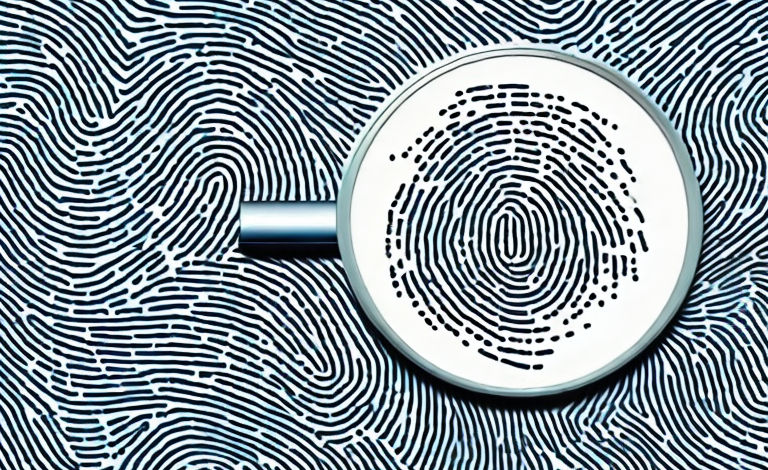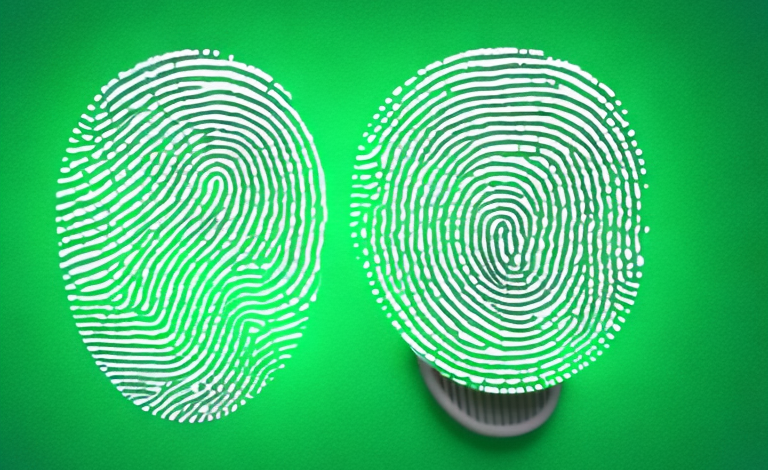Fingerprint sensors have become an essential feature on modern smartphones, providing a convenient and efficient way to unlock devices and keep private information secure. However, like any component in a device, fingerprint sensors can wear out over time. In this article, we will explore whether a fingerprint sensor can wear out, how fingerprint sensors work, common causes of fingerprint sensor failure, signs that your fingerprint sensor may be wearing out, how long fingerprint sensors typically last and the factors that can affect their lifespan. We will also discuss the best practices for maintaining your smartphone’s fingerprint sensor, the pros and cons of using a fingerprint sensor for phone security, the reliability of fingerprint sensors compared to other biometric authentication methods, the future of biometric authentication technology, and alternatives to using a fingerprint sensor for phone security.
How fingerprint sensors work
Before discussing whether a fingerprint sensor can wear out, it is important to understand how they work. Fingerprint sensors use a process called capacitive imaging to capture the unique pattern of ridges and valleys on the surface of the fingertip. This process involves tiny electrodes on the sensor that generate an electrical current, which is disrupted by the ridges and valleys on the fingertip. The sensor then creates a digital image of the fingerprint pattern, which is used to authenticate the user’s identity.
It is worth noting that not all fingerprint sensors are created equal. Some sensors use optical imaging, which captures an image of the fingerprint using light and a camera. Others use ultrasonic waves to create a 3D image of the fingerprint. However, capacitive imaging is the most common method used in smartphones and other consumer devices.
Common causes of fingerprint sensor failure
Like any electronic component, fingerprint sensors can fail due to a variety of factors. One of the most common causes of fingerprint sensor failure is physical damage. If the sensor is scratched or cracked, it may not be able to accurately capture the fingerprint pattern. Exposure to moisture or extreme temperatures can also cause the sensor to malfunction. Additionally, software issues, such as outdated or corrupted drivers, can cause problems with the fingerprint sensor.
Another factor that can contribute to fingerprint sensor failure is improper usage. If the user’s fingers are dirty or oily, the sensor may not be able to read the fingerprint accurately. Similarly, if the user presses too hard or too lightly on the sensor, it may not be able to capture the fingerprint pattern. It is important to clean the sensor regularly and use it properly to ensure its longevity and accuracy.
Signs that your fingerprint sensor may be wearing out
There are a few signs that your fingerprint sensor may be wearing out. If you are having difficulty unlocking your device with your fingerprint, or if the sensor is intermittently failing to recognize your fingerprint, it may be a sign that the sensor is worn out or damaged. In some cases, the sensor may produce false positive or false negative readings, which can be an indication of a worn-out sensor.
Another sign that your fingerprint sensor may be wearing out is if it takes longer than usual for your device to recognize your fingerprint. This could be due to the sensor being worn out or damaged, or it could be a sign that the software needs to be updated. If you have tried updating the software and the issue persists, it may be time to replace the sensor.
It is also important to note that certain factors can affect the performance of your fingerprint sensor, such as dry or wet fingers, dirt or debris on the sensor, or even changes in temperature. If you are experiencing issues with your fingerprint sensor, try cleaning the sensor and your fingers, and make sure your fingers are not too dry or wet. If the issue persists, it may be a sign that the sensor is wearing out and needs to be replaced.
How long do fingerprint sensors typically last?
The lifespan of a fingerprint sensor can vary depending on several factors, such as the quality of the sensor, the frequency of use, and the conditions in which it is used. Typically, fingerprint sensors are expected to last for several years with normal usage, but they may wear out sooner if subjected to harsh conditions or extensive use.
It is important to note that regular maintenance and cleaning can also impact the lifespan of a fingerprint sensor. Dirt, oil, and other debris can accumulate on the sensor and affect its accuracy and functionality. Therefore, it is recommended to clean the sensor regularly with a soft, dry cloth to ensure optimal performance and longevity.
Can you replace a worn-out fingerprint sensor?
In most cases, it is not possible to replace a worn-out fingerprint sensor without replacing the entire device. Some manufacturers may offer warranty or repair services for devices with faulty fingerprint sensors, but these repairs can be costly and time-consuming.
It is important to note that fingerprint sensors can wear out over time due to frequent use. This can result in the sensor becoming less accurate or failing to recognize fingerprints altogether. In some cases, cleaning the sensor with a soft cloth or restarting the device can help improve its performance.
However, if the sensor is severely damaged or worn out, it may be necessary to replace the entire device. It is always recommended to check with the manufacturer or a certified repair technician before attempting any repairs on your own, as this can void the device’s warranty or cause further damage.
Factors that can affect the lifespan of a fingerprint sensor
There are several factors that can affect the lifespan of a fingerprint sensor. Exposure to moisture or extreme temperatures can cause damage to the sensor over time. Similarly, exposure to sunlight or other sources of radiation can cause wear and tear on the sensor. Extensive use of the fingerprint sensor can also contribute to its wear and tear, as can physical damage caused by drops or other accidents. Finally, the quality of the sensor itself can have an impact on its lifespan, as lower-quality sensors may wear out more quickly than high-quality ones.
Another factor that can affect the lifespan of a fingerprint sensor is the type of material it is made of. Some sensors are made of more durable materials, such as ceramic or sapphire, which can withstand more wear and tear than sensors made of plastic or other less durable materials.
In addition, the environment in which the fingerprint sensor is used can also impact its lifespan. For example, if the sensor is frequently used in a dusty or dirty environment, particles can accumulate on the sensor and cause damage over time. Similarly, if the sensor is used in a high-traffic area, it may be more prone to physical damage from accidental bumps or drops.
Best practices for maintaining your smartphone’s fingerprint sensor
To ensure that your smartphone’s fingerprint sensor lasts as long as possible, there are several best practices that you should follow. First, keep your device dry and avoid exposing it to extreme temperatures or sunlight. Second, clean the fingerprint sensor regularly with a soft, dry cloth to remove any dirt or debris that may be obstructing the sensor. Finally, avoid using the fingerprint sensor excessively and be gentle when handling your device to minimize the risk of accidental damage.
Additionally, it is important to update your smartphone’s software regularly to ensure that the fingerprint sensor is functioning properly. Software updates often include bug fixes and improvements to the device’s security features, which can help prevent issues with the fingerprint sensor.
Another best practice for maintaining your smartphone’s fingerprint sensor is to avoid using it with wet or dirty fingers. Moisture or debris on your fingers can interfere with the sensor’s ability to read your fingerprint accurately, which can lead to frustration and potentially damage the sensor over time. If your fingers are wet or dirty, it is best to use an alternative method of unlocking your device, such as a PIN or password.
Pros and cons of using a fingerprint sensor for phone security
While fingerprint sensors are a convenient and efficient way to keep your smartphone secure, there are potential drawbacks to using them. For example, fingerprint sensors are not foolproof and can be spoofed with fake fingerprints, and some users may find them less secure than traditional password or PIN-based security systems. Additionally, if your fingerprint data is compromised, it cannot be changed, whereas passwords and PINs can be easily updated.
On the other hand, using a fingerprint sensor for phone security can also have its advantages. For one, it is a more convenient and faster way to unlock your phone compared to typing in a password or PIN. It also eliminates the need to remember complex passwords or PINs, which can be a hassle for some users. Moreover, fingerprint sensors can provide an added layer of security for sensitive apps and data, such as banking or financial apps, by requiring a fingerprint scan before granting access.
How reliable are fingerprint sensors compared to other biometric authentication methods?
Fingerprint sensors are generally considered to be more reliable than other biometric authentication methods, such as facial recognition or voice recognition. This is because fingerprints are unique and relatively easy to capture and analyze, whereas other forms of biometric data can be more challenging to capture and verify accurately.
However, it is important to note that fingerprint sensors are not foolproof and can still be vulnerable to certain types of attacks, such as spoofing or copying fingerprints. In order to enhance the security of fingerprint authentication, some systems now incorporate additional measures such as liveness detection, which can detect whether the fingerprint being presented is from a live person or a fake replica.
The future of biometric authentication technology
As technology continues to advance, the field of biometric authentication is also evolving. New biometric authentication methods, such as iris scanning and vein recognition, are being developed and may soon become more widely available. Additionally, the use of artificial intelligence and machine learning algorithms may make biometric authentication systems more accurate and reliable in the future.
Alternatives to using a fingerprint sensor for phone security
If you are concerned about the reliability or security of fingerprint sensors, there are several alternatives that you can consider. One option is to use a traditional password or PIN-based security system instead. Another option is to use a combination of biometric and traditional security measures, such as a fingerprint sensor in combination with a password or PIN.
In conclusion, while fingerprint sensors can wear out over time, they are generally reliable and efficient for securing smartphones. By following best practices for maintaining your smartphone’s fingerprint sensor, you can help to ensure that it lasts as long as possible. However, if you are concerned about the security or reliability of fingerprint sensors, there are several alternatives that you can consider, such as traditional password or PIN-based systems, or a combination of biometric and traditional security measures.



